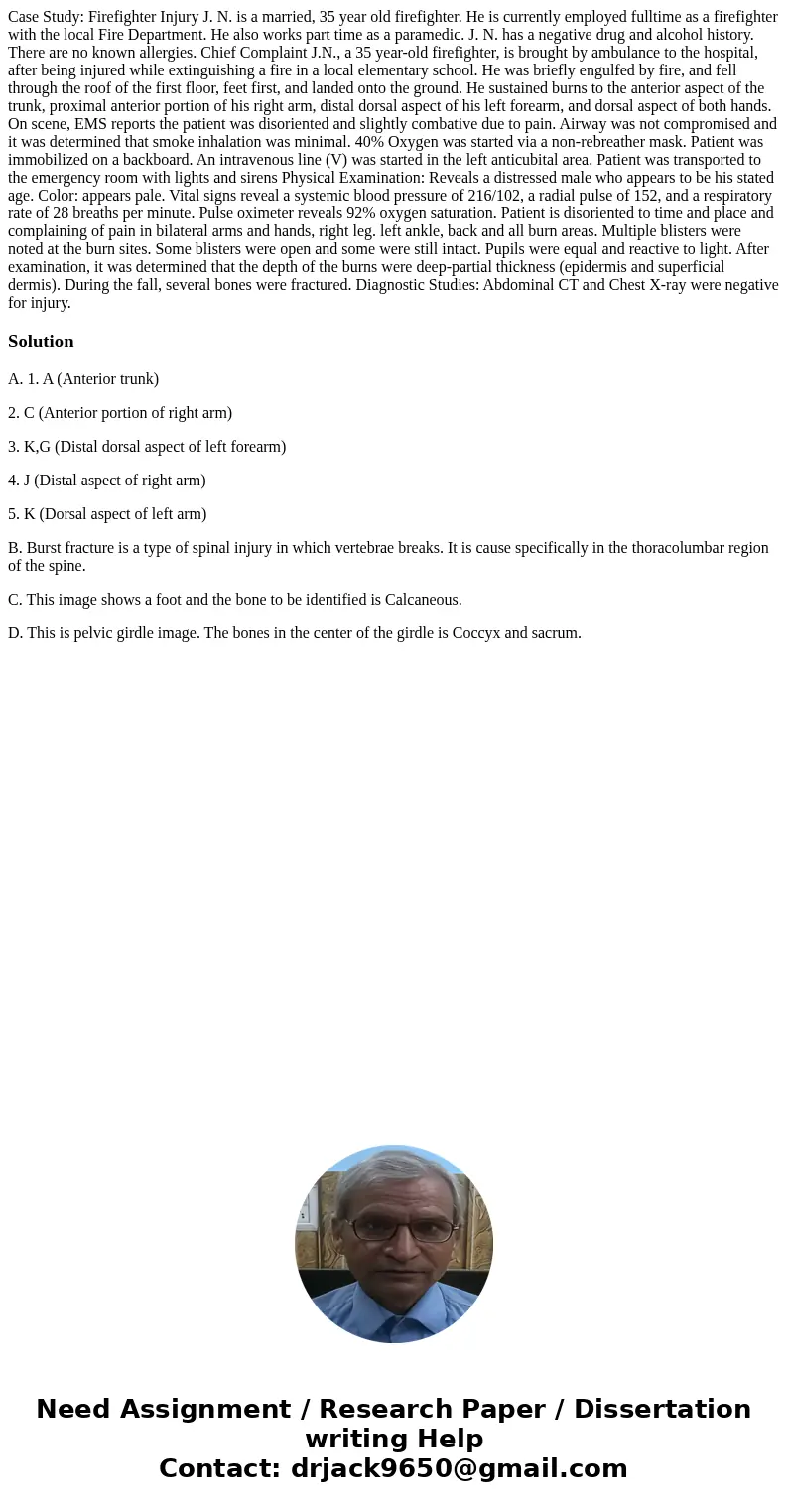Case Study Firefighter Injury J N is a married 35 year old f
Case Study: Firefighter Injury J. N. is a married, 35 year old firefighter. He is currently employed fulltime as a firefighter with the local Fire Department. He also works part time as a paramedic. J. N. has a negative drug and alcohol history. There are no known allergies. Chief Complaint J.N., a 35 year-old firefighter, is brought by ambulance to the hospital, after being injured while extinguishing a fire in a local elementary school. He was briefly engulfed by fire, and fell through the roof of the first floor, feet first, and landed onto the ground. He sustained burns to the anterior aspect of the trunk, proximal anterior portion of his right arm, distal dorsal aspect of his left forearm, and dorsal aspect of both hands. On scene, EMS reports the patient was disoriented and slightly combative due to pain. Airway was not compromised and it was determined that smoke inhalation was minimal. 40% Oxygen was started via a non-rebreather mask. Patient was immobilized on a backboard. An intravenous line (V) was started in the left anticubital area. Patient was transported to the emergency room with lights and sirens Physical Examination: Reveals a distressed male who appears to be his stated age. Color: appears pale. Vital signs reveal a systemic blood pressure of 216/102, a radial pulse of 152, and a respiratory rate of 28 breaths per minute. Pulse oximeter reveals 92% oxygen saturation. Patient is disoriented to time and place and complaining of pain in bilateral arms and hands, right leg. left ankle, back and all burn areas. Multiple blisters were noted at the burn sites. Some blisters were open and some were still intact. Pupils were equal and reactive to light. After examination, it was determined that the depth of the burns were deep-partial thickness (epidermis and superficial dermis). During the fall, several bones were fractured. Diagnostic Studies: Abdominal CT and Chest X-ray were negative for injury. 
Solution
A. 1. A (Anterior trunk)
2. C (Anterior portion of right arm)
3. K,G (Distal dorsal aspect of left forearm)
4. J (Distal aspect of right arm)
5. K (Dorsal aspect of left arm)
B. Burst fracture is a type of spinal injury in which vertebrae breaks. It is cause specifically in the thoracolumbar region of the spine.
C. This image shows a foot and the bone to be identified is Calcaneous.
D. This is pelvic girdle image. The bones in the center of the girdle is Coccyx and sacrum.

 Homework Sourse
Homework Sourse